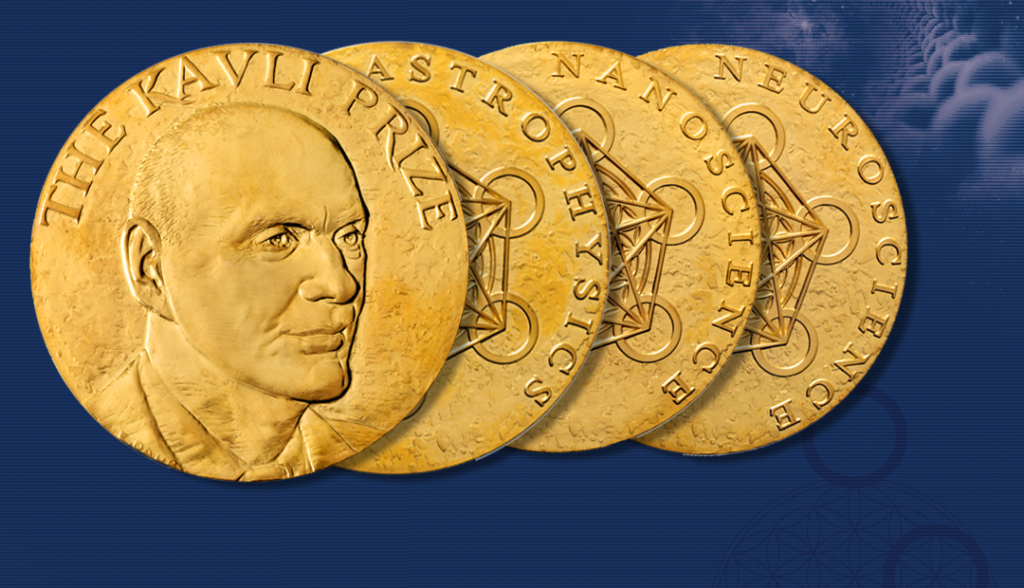
The Kavli Prize is awarded every two years in honor and support of researchers in three fields: nanoscience, astrophysics, and neuroscience.
It’s a bit like a more modern Nobel Prize — and much like in the Nobel Prize, the Kavli Prize also comes with a hefty $1,000,000 bonus prize, in addition to the recognition and laurels. This year, seven scientists from five countries were honored:
- Kavli Prize in Astrophysics: Andrew Fabian (UK);
- Kavli Prize in Nanoscience: Harald Rose (Germany), Maximilian Haider (Austria), Knut Urban(Germany) and Ondrej L Krivanek ( UK and Czech Republic);
- Kavli Prize in Neuroscience: David Julius (US) and Ardem Patapoutian (US).
Here’s why.
Astrophysics: Black holes and galactic ecosystems
In many ways, the universe can be regarded as a living system, with stars and galaxies experiencing a lifecycle that strangely resembles that of living organisms in a universal ecosystem.
But what role do black holes play in this ecosystem? After all, they seem like weird aberrations that only absorb objects and don’t release anything back.
For us humans, the fact that we can understand some of these processes is amazing. After all, we’ve only recently explored the furthest corners of the Earth, and we can already make observations and deductions about the universe as a whole — that’s pretty awesome.
Much of these achievements are owed to observational X-ray astronomy. This procedure has allowed us to view these and other extremely hot and energetic components of the universe, providing stunning evidence for these processes at work, unveiling how the major constituents of the universe can profoundly influence its overall evolution. Andrew Fabian, a professor at the University of Cambridge, employs X-ray astronomy to explore the physics of the universe.
In particular, he focused on the connections between supermassive black holes and their surrounding environment, describing the role that these black holes play in the larger galactic system.
“Andrew Fabian is one of the most prolific and influential astronomers of our time,” said Viggo Hansteen, chair of the Kavli Prize Committee in Astrophysics. “His research, breadth of knowledge and insights into the universe provided the essential physical understanding of how disparate phenomena in this ecosystem are interconnected.”
Nanoscience: Seeing the unseen — now in 3D
A lot of research in nanoscience focuses on ‘seeing’ things that are hard to see. After all, if you want to change materials at the smallest possible scale, you need tools that work on the smallest possible scale.
The size of an atom is on the scale of 0.1 nanometers, but the resolution of conventional microscopes is limited by the wavelength of light — which is 5000 times larger than an atom. So optical lenses can’t image atoms. This is where electron microscopes come into the game.
With these microscopes, a beam of electrons is transmitted through a thin material, forming an image based on how electrons interact with it. The image is then magnified and focused onto an imaging device. But the resulting images were distorted and blurry because producing this type of lens turned out to be extremely difficult. The problem persisted for 60 years, until the increased computation power of the 1990s allowed researchers to construct a new generation of aberration-corrected lenses, allowing the visualization of processes at the atom scale in three dimensions.
Harald Rose proposed a novel lens design, and Maximilian Haider, Knut Urban, and Ondrej L. Krivanek improved on it, which is why they are sharing the Kavli Prize.
“Their work is a beautiful example of scientific ingenuity, dedication and persistence. They have enabled humanity to see where we could not see before,” said Bodil Holst, chair of the Kavli Prize Committee in Nanoscience. “Honouring these scientists and sharing with the world who they are and how they have transformed research, technology, industries and our lives is more important than ever.”
Discovering the human sensors of temperature, pressure, and pain
Our body integrates an excellent system of sensors. Whether it’s how we see the world through our eyes, how we hear, or how we perceive things like temperature or pressure, we’re gifted with a pretty rich sensorial experience.
Some of those sensory receptors have long been described (for instance, those for smell and vision) — but the molecular understanding of how physical properties such as temperature or pressure are detected and then sent through electrical processes to our brans has been lacking.
Over the past two decades, David Julius and Ardem Patapoutian have described the molecular mechanisms that underpin these processes, as well as pain, providing new insights into how the human body works — and how several diseases affect it.
“The individual discoveries of David Julius and Ardem Patapoutian have given the scientific community the molecular and neural basis for thermosensation and mechanosensation that is revolutionizing our understanding of sensory detection and will have a profound impact on addressing health and disease worldwide,” said Kristine B. Walhovd, chair of the Kavli Prize Committee in Neuroscience.
Thanks to the work of these researchers, we can understand the world around us better than ever before — from the very particles that make up the universe to the galactic interactions light years away, and to our very own body. The awards are truly well deserved.
For more details, check out the Kavli Prize website.









